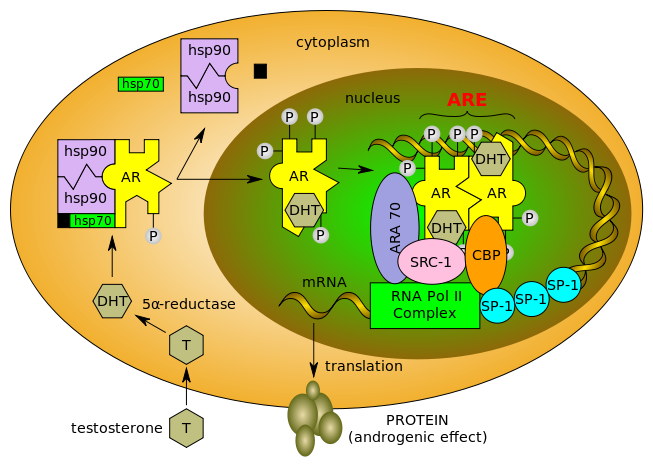During my years in Pharmaland, I often sat in waiting rooms waiting to see the Principal Investigator (PI) for one of the studies we were doing. I would generally see them at the end of the clinic, preferring to arrive early and chat with some of the patients to learn of their experiences, the trials and tribulations of cancer therapy. This keeps your feet on the ground – drug development is not an academic exercise, there are real people involved after all.
Some of those patients were really sick, with quite advanced disease, maybe with a year or less to live by conventional estimates and yet they were entering a clinical trial, or seeking to get into one with great hope. Over time, one would meet some of those patients repeatedly, to be greeted with good cheer and the latest round in their stories. These shared moments are precious, you learn little snippets of their journey back to health and what it’s really like to go through various regimens. I cannot tell you how thrilling it was to meet some of the sickest patients several years later and learn that the greatest thing you ever hear in an oncologists surgery – that they were in remission.
To this day that still gives me goosebumps.
One of the things that often came up in those brief chats though, was the lab results, with various counts being up or down. Some of these matter, some don’t. The one that always puzzled me was raised platelets because on asking the doctors, few ever really seemed concerned about the levels, unless they were too low (thrombocytopenia) to undergo their next round of treatment. The scientist in me, however, always wondered about raised platelets – what do they do and do they have an impact on outcome?
This week, a paper has been published in the New England Journal of Medicine by Anil Sood’s group at MD Anderson Cancer Center that begins to address this very issue of raised platelets or thrombocytosis in cancer therapy.
The crux of the research was nicely summed in the MD Anderson press release:
“Highly elevated platelet levels fuel tumor growth and reduce the survival of ovarian cancer patients.”
Now that may sound a little dramatic but I was curious to know why does this happen, so this morning I talked to Dr Sood to find out more about his groups research:
PSB: This exciting research was about the impact of elevated platelets, can you tell us why this happens and what the consequences are?
Dr Sood: We looked at the clinical implications and found that patients who have higher platelet counts tend to live for a shorter time period and beyond that we asked how is it that these platelet counts are going up? We did a number of studies, including human material as well as laboratory experiments, and figured out that tumors can produce certain growth factors such interleukin-6 (IL-6) that stimulate the liver to produce this factor called thrombopoietin, which stimulates platelets counts. That’s the paracrine or complex circuit that promotes high levels of platelets in cancer patients.
PSB: What was the basic underlying mechanism behind this?
Dr Sood: The mechanism here was that the tumor derived IL-6 stimulates thrombopoietin production. Thrombopoietin will stimulate megakaryopoeisis through the bone marrow, which will then stimulate platelet production. We did some experiments to also figure out that if you could block this from occurring, could you reduce or could you block platelet levels from going up. We did a number of experiments using both siRNA as well as an antibody that blocks interleukin-6. If you block either of those you can abrogate the platelet counts from going up.
We also worked with collaborators in UK where they had used this same antibody that we used for animal experiments, in a clinical trial and they found that platelets come down when patients are treated with an IL-6 blocking antibody. That gave us further evidence that this mechanism seems to be operative where it is important for platelets.
PSB: Are there IL-6 antibody therapies available for community oncologists to treat their patients.
Dr Sood: Not yet. It is something, especially in the context of ovarian cancer, that is undergoing clinical development, so they need to be carefully developed.
The other question is an antibody such as that adequate in itself, or does it need to be combined with a cytotoxic or with a chemotherapy drug? In some of our preclinical experiments that we included here, there was the suggestion that combining it with chemotherapy was even more effective than just using the antibody alone.
PSB: When oncologists see patients with high platelet levels do they currently treat them in any way?
Dr Sood: Not really any differently. It is something that we have simply known for a long time. In this context, given especially that these patients tend to have aggressive behavior (of the tumour), there is a lot of potential clinical implications, but again this is relatively new, so I think we need to do additional work to really figure out what are the best approaches to treat these patients.
Is it better to combine an IL-6 antibody, specially in those patients who have high platelets, along with chemotherapy? Can drugs like even aspirin or things like that that interfere with platelet function, could those have implications? There are data that would suggest that patients who are on a daily aspirin tend to live longer in the context of cancer patients. These type of things need to be developed further.
PSB: Could the high platelets cause inflammation?
If you can’t see the soundbite audio clip, click here.
PSB: Where is your research going next?
Dr Sood: In many directions! This has opened a lot of questions for us. We found that platelets are not restricted to the blood system, but that they can in the tumor microenvironment also traffic. We want to understand how is that survival can be effected? I don’t think that the survival is effected just because these patients are getting more blood clots, or something like that. I think that the platelets can provide growth factors for cancers, which we are trying to understand.
Obviously, you don’t want to reduce or completely eliminate platelets because they are an essential part of our body, but if we can block this kind of abnormal thrombocytosis from occurring then that might have implications for therapy as well. The other thing we are asking is that since platelets are elevated in a fraction of cancer patients, can these be also useful as a biomarker, so we are trying to do studies to look at that aspect. There are many directions this research opens up.
Summary:
Although thrombocytosis has obviously been known for a long time, it’s really only now that we are starting to have a clearer idea of the potential negative impact of raised platelet levels in cancer patients. The survival curves between normal platelets and thrombocytosis in ovarian cancer were dramatically significantly different in the paper (P<0.001).
Obviously these results would need to be confirmed in randomised trials before making a more definitive conclusion from a patient perspective. That said, the results from Stone et al., (2012) do suggest that while raised platelets can influence survival in ovarian cancer, there may be some therapeutic options down the road to address this, possibly with an IL-6 antibody added to chemotherapy.
The anti-IL-6 antibody used in this elegant research (and the early study at Barts) was siltuximab (J&J), although a quick search of the clinical trial database revealed no US studies in ovarian cancer. In the paper data from UK patients were included (see also Coward et al., (2011) in the referencs below, as the MD Anderson press release noted:
“In a clinical trial conducted at the Barts Cancer Institute, Queen Mary, University of London, the team also found that treatment of 18 ovarian cancer patients in a phase I/II clinical trial with siltuximab, an antibody to IL-6, sharply reduced platelet counts over a three-week period.”
It will be interesting to see if approach is subsequently tried in a larger scale trial with ovarian patients who have thrombocytosis to confirm the positive impact. Certainly, the clinical rationale is there. For those of you interested in the role of IL-6 in ovarian cancer further, a recent paper by Coward et al., (2011) from the group who did the phase I/II trial of siltuximab in ovarian cancer is well worth a read (see references below).
References:
 Stone, R., Nick, A., McNeish, I., Balkwill, F., Han, H., Bottsford-Miller, J., Rupaimoole, R., Armaiz-Pena, G., Pecot, C., Coward, J., Deavers, M., Vasquez, H., Urbauer, D., Landen, C., Hu, W., Gershenson, H., Matsuo, K., Shahzad, M., King, E., Tekedereli, I., Ozpolat, B., Ahn, E., Bond, V., Wang, R., Drew, A., Gushiken, F., Collins, K., DeGeest, K., Lutgendorf, S., Chiu, W., Lopez-Berestein, G., Afshar-Kharghan, V., & Sood, A. (2012). Paraneoplastic Thrombocytosis in Ovarian Cancer New England Journal of Medicine, 366 (7), 610-618 DOI: 10.1056/NEJMoa1110352
Stone, R., Nick, A., McNeish, I., Balkwill, F., Han, H., Bottsford-Miller, J., Rupaimoole, R., Armaiz-Pena, G., Pecot, C., Coward, J., Deavers, M., Vasquez, H., Urbauer, D., Landen, C., Hu, W., Gershenson, H., Matsuo, K., Shahzad, M., King, E., Tekedereli, I., Ozpolat, B., Ahn, E., Bond, V., Wang, R., Drew, A., Gushiken, F., Collins, K., DeGeest, K., Lutgendorf, S., Chiu, W., Lopez-Berestein, G., Afshar-Kharghan, V., & Sood, A. (2012). Paraneoplastic Thrombocytosis in Ovarian Cancer New England Journal of Medicine, 366 (7), 610-618 DOI: 10.1056/NEJMoa1110352
Coward, J., Kulbe, H., Chakravarty, P., Leader, D., Vassileva, V., Leinster, D., Thompson, R., Schioppa, T., Nemeth, J., Vermeulen, J., Singh, N., Avril, N., Cummings, J., Rexhepaj, E., Jirstrom, K., Gallagher, W., Brennan, D., McNeish, I., & Balkwill, F. (2011). Interleukin-6 as a Therapeutic Target in Human Ovarian Cancer Clinical Cancer Research, 17 (18), 6083-6096 DOI: 10.1158/1078-0432.CCR-11-0945




